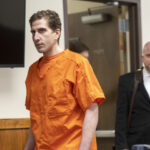Commentary
In July of 1944, a year and some months before the official end to the Second World War, allied powers gathered at the Bretton Woods Hotel in New Hampshire to hammer out a new economic order that would dominate the world at war’s end. The meeting alone expressed great confidence in a coming victory. They were not wrong.
As part of the new plan for the world, a new monetary system would take shape. It would be based in gold, with the dollar convertibility guaranteed at 1/35 an ounce. The right to convert would not be available to average people. It was something guaranteed by nation states and central banks alone, at least those allowed to participate.
Hazlitt criticized the proposed new monetary system. He said that by making the dollar the world reserve currency, and guaranteeing convertibility into gold only by large trading nations, the new system could not last. This is because there was no mechanism to police nations’ fiscal and monetary policies. The new system would enable endless expansion of money and credit abroad without consequence. The United States would experience, eventually, a devastating gold outflow. At some point in the future, he predicted, the United States would have to suspend convertibility.
This is precisely what happened, not right away but eventually. In 1971, Richard Nixon stopped the system whereby the United States shipped out gold. He did so to save the system, and bring about a new one. The expectation was that gold would fall in price. The opposite happened. Eight years later, the price had reached $850. The people who bet against the monetary elites were the winners.
I’ve been visiting Hazlitt’s writing from this period as a way to understand the present moment. It’s clear that the elites in those days were setting up a new global machinery. In designing such a system—John Maynard Keynes from the UK was the primary influence—there were several moving parts. There was the monetary system as described above. There was to be a transaction clearing system administered by a new World Bank, the remnants of which survive in the Special Drawing Rights (SDRs) today. There was a financing system in the form of the International Monetary Fund. And there was a new trade system called the General Agreement on Tariffs and Trade (GATT), which later became the World Trade Organization.
These four moving parts—money, clearing, lending, and trading—were designed to work together as if this entire world economy was a machine to be managed, which is precisely how Keynes thought of it. Hazlitt’s objection was that the system was too clever by half, because it could not account for market and political exigencies. It’s one thing for something to work on paper; it’s something else for it to work in reality.
He saw through the problem that the new system did nothing to discipline governments that were party to the deal. He predicted that all governments would take advantage of the opportunity to exchange in reckless fiscal and monetary policies while free riding against the rich nations that were guaranteeing the system against failure.
He was right about this eventually but, in the meantime, the world economy did take a new direction toward what was later called neoliberalism, a managed system that exalted freedom in international trade and fiscal and monetary liquidity above all else.
Why was the system set up this way? The reason is that an entire generation of what were known as enlightened diplomats had become convinced that depression and war (1930s and 1940s) stemmed from trade protectionism and too many monetary guardrails that prevented states from flooding the system in times of crisis.
In other words, the system of 1944 was established mainly to backwards fix what its architects saw as the main problems of the previous two decades. This is human nature. If you live through a house fire caused by an electrical spark, you are going to be extra careful about the soundness of wiring in the future. If your health has failed you for reasons of a bad diet, you are going to be more careful in the future to eat right. And so on. They were more focused on fixing old problems than anticipating new ones.
Thus did the world of the 1950s and 1960s proceed with these fixes in place. The results were spectacular by any historical standard, especially for the United States. But remember Hazlitt’s prediction that the new system would not provide discipline to states in the matter of fiscal and monetary policy.
After a series of economic missteps, the United States found itself in a precarious position. The Vietnam War, combined with excessive spending on the welfare state, created unsustainable economic tensions. The gold-based trading system began to falter, leading to economic imbalances that ultimately culminated in Nixon ending the system in favor of preserving the global trading order.
In the following years, inflation wreaked havoc on the US economy, with three successive waves in the 1970s. It wasn’t until the reign of Paul Volcker at the Fed and the presidency of Ronald Reagan that these economic challenges were addressed. However, the need to win the Cold War presented a new set of challenges, forcing the Reagan administration to prioritize foreign policy over fiscal discipline.
Fast forward to 2016, and the US had lost much of its manufacturing sector to foreign competition due to policies put in place during the Nixon era. President Donald Trump sought to address these issues by dismantling the World Trade Organization and implementing old-fashioned trade policies. This move, predicted by Hazlitt, further destabilized the global economic system.
As a result of Trump’s actions, the international trade landscape shifted dramatically, with governments exploring new regional trading systems and settlement mechanisms. The US now faces significant challenges in competing on the world stage without substantial domestic reforms. The country’s mounting debt, combined with a strong international dollar, has led to trade deficits and subsidized imports over domestic goods.
The unraveling of the post-1944 economic system poses serious risks of depression and conflict. The solution lies in a return to fiscal and monetary responsibility, prioritizing balanced budgets and sound money. By focusing on domestic stability rather than imperial ambitions, the US can pave the way for a renewed commitment to free trade on a global scale. Please rephrase.
Source link








